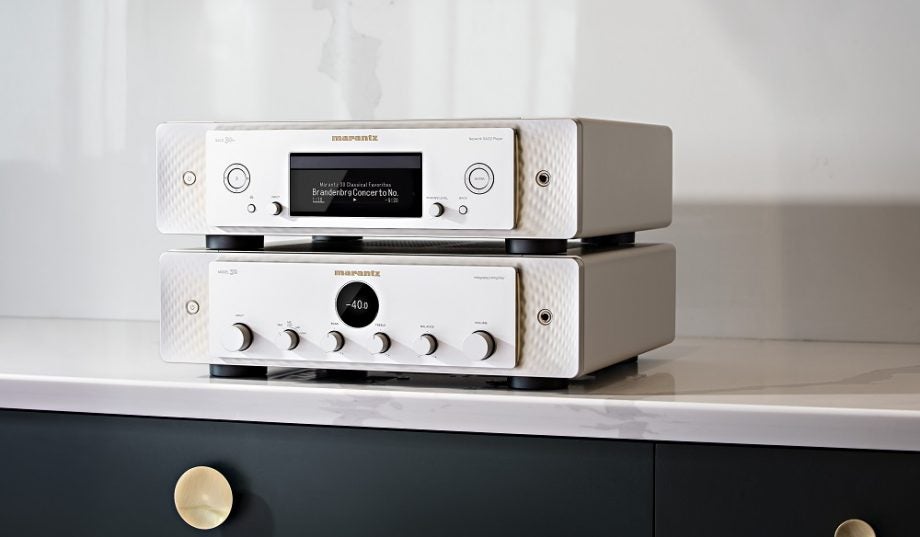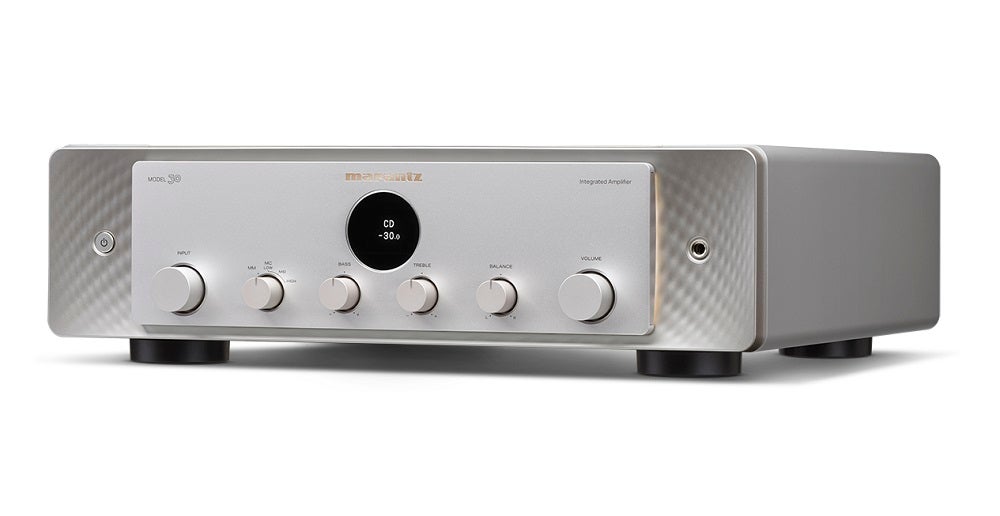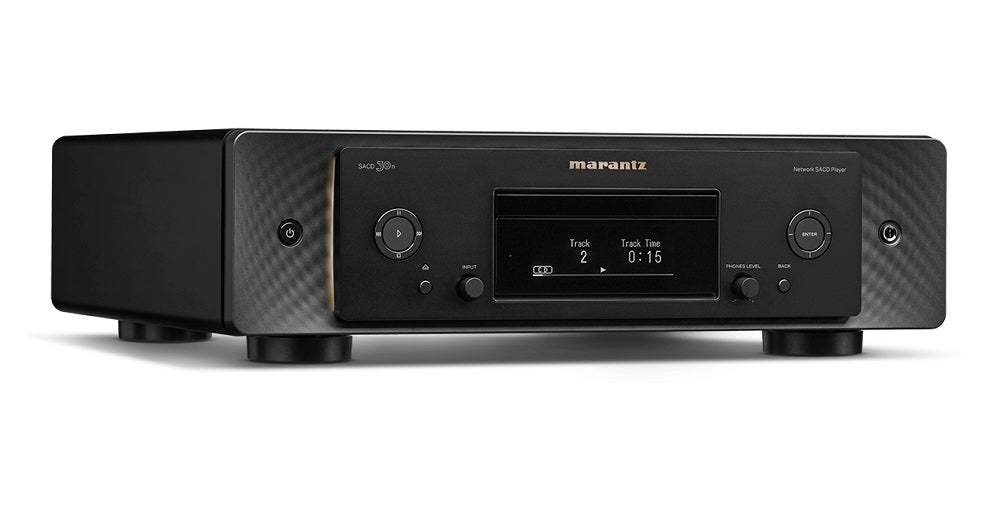Marantz enters a new era with the MODEL 30 and SACD 30n products

Marantz has outlined its vision for the future with two new products in the MODEL 30 integrated amplifier and SACD 30n network audio player.
Designed and tuned over the last three years, the Marantz MODEL 30 and SACD 30n are the first products to launch with the brand’s new industrial design language, one that celebrates the heritage of Marantz products from the 1950s, 60s and 70s.
The MODEL 30 and SACD 30n came to fruition back in 2017 as Marantz looked to reposition itself within the world of high-end audio. Taking inspiration from products such as the original Audio Consolette, Model 30, Model 2250, and Model 9 amplifier, the new MODEL 30 and SACD 30n are a mixture of the company’s classic design ethos married with a modern approach to construction.
The MODEL 30’s all-analogue design features a fully discrete two-stage build, with independent power supplies for the preamplifier and power amplifier. The circuit for the power supply circuit is said to enable a stable flow of power that’s unaffected by fluctuations from the power amplifier stage. Also used is an oversized toroidal transformer exclusively for the preamp to ensure high purity, while mounted around the transformer is a double shield steel case to curb leakage flux that could create noise in surrounding circuits.

The Model 30 integrated amplifier
The power supply for the power amplifier stage is capable of delivering high current instantaneously to the switching mode amplifier. This offers maximum control over any connected speakers for the best reproduction of audio.
The Phono EQ stage in the MODEL 30 amplifier can be used with both moving magnet and low-output moving coil cartridges. The MODEL 30 features Marantz’s proprietary discrete circuit design boards – Hyper-Dynamic Amplifier Modules (HDAMs) – for a more “musical, accurate and detailed sound”.
The SACD 30n SACD/network player is built to appeal to the hi-fi traditionalists and modern music enthusiasts alike. With HEOS support built-in, the player can stream tracks from Amazon Music HD, Tidal, Spotify and other services.

The Model 30n SACD network audio player
HEOS can stream FLAC files from 44.1kHz to 192kHz at up to 24-bit resolution, DSD 2.8MHz and DSD 5.6MHz, ALAC and MP3. It also offers access to to hands-free control with Alexa, Google Assistant and Siri supported.
Internally, two system clocks are said to offer the most accurate up-conversion of an incoming signal ranging from 44.1kHz to 384kHz. The SACD 30n’s headphone amplifier features a dedicated amplifier module using Marantz’s HDAM-SA2 circuitry, which the company claims offers “exceptional signal-to-noise ratio”. The gain factor can be adjusted to three presets – low, mid and high – to work with a wider range of headphones and make it possible to drive high impedance headphones.
Joel Sietsema, SVP of Brand of Marantz’s parent company Sound United, says: “Our main goal in updating Marantz was to effectively capture the timelessness, musicality and passion the brand has brought to the world for nearly 70 years. This is why we dove into the brand’s history first to design the MODEL 30 and SACD 30n. We knew these new products and their successors had to continue refining that classic Marantz sound, but also deliver fresh new aesthetics and build quality that contemporary enthusiasts could love.”
The Marantz MODEL 30 and SACD 30n are on sale at authorised Marantz dealers from early September 2020 for £2700 each.


